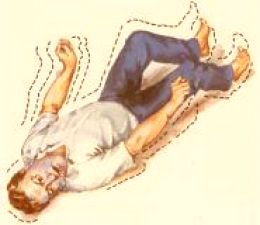Lafora disease is a progressive seizure disorder that is genetically inherited and is distinguished by the occurrence of the inclusion bodies known as Lafora bodies in the neurons and cells of the skin, muscle, liver and the heart. Majority of the patients identified with the disease do not live longer than 25 years and it is commonly inevitable for death to occur within the span of 10 years. Currently there is not an existing cure for the disease.
Research detected 2 genes that are associated with the disease. These are the EMP2B and EMP2A on chromosome 6. But other genes may be involved as well. The frequency of occurrence of the disease is unknown.
SYMPTOMS
Lafora disease commonly develops in children during the early adolescent phase. The first 10 years of life generally leaves no indication of the presence of the disease. It rarely begins for children within the first five to six years of age and the first symptom that occurs is the learning disorder. The symptoms usually start at adolescence or late childhood and then become worse as time progresses.
Lafora disease is rare in American children but has high occurrence in children of Southern European descent such those from Italy, France and Spain. The disease is also found in some children from the South Asian countries like Pakistan and India and natives of North Africa. The disease prefers no particular gender as it is inherited genetically. The symptoms of the disease are:
• Myoclonus – muscle jerks or spasms
• Ataxia – difficulty in walking
• Tonic clonic Seizures
• Severe dementia that develops very fast
• Lafora bodies in the cells of the skin, muscle, liver, the heart and nerve
• Temporary blindness
• Depression
• Visual hallucinations
• Academic performance is affected which at times cannot be explained
Diagnosis of Lafora Disease
The diagnosis of the disease is based on the symptoms and age of the patient when the symptoms started to show. A skin biopsy taken from the armpit should show the presence of Lafora bodies in the apocrine sweat glands if the disease is indeed present. If the result is negative but there is strong suspicion of the disease, biopsies of the brain and liver may be conducted. However, DNA sequencing is still the preferred and sure method of diagnosing the condition.
Treatment
The treatment for the disease is chiefly to manage the symptoms. The myoclonus and seizures can be controlled at the beginning of the disease with antiepileptic medications. But the symptoms will grow worse as the patient grows older especially with the onset of ataxia and dementia. Majority of the patients with the disease do not survive beyond 30 years old. A drug named Zonisamide aids in managing and reducing the intensity of seizures and is found to extend the patient’s life span.
Lafora disease receives little recognition in the United States as it is quite rare. In fact, there is no record of the number of children affected with the condition. Because of this, there is little funding received from the government for the research of the disease and its treatment.
